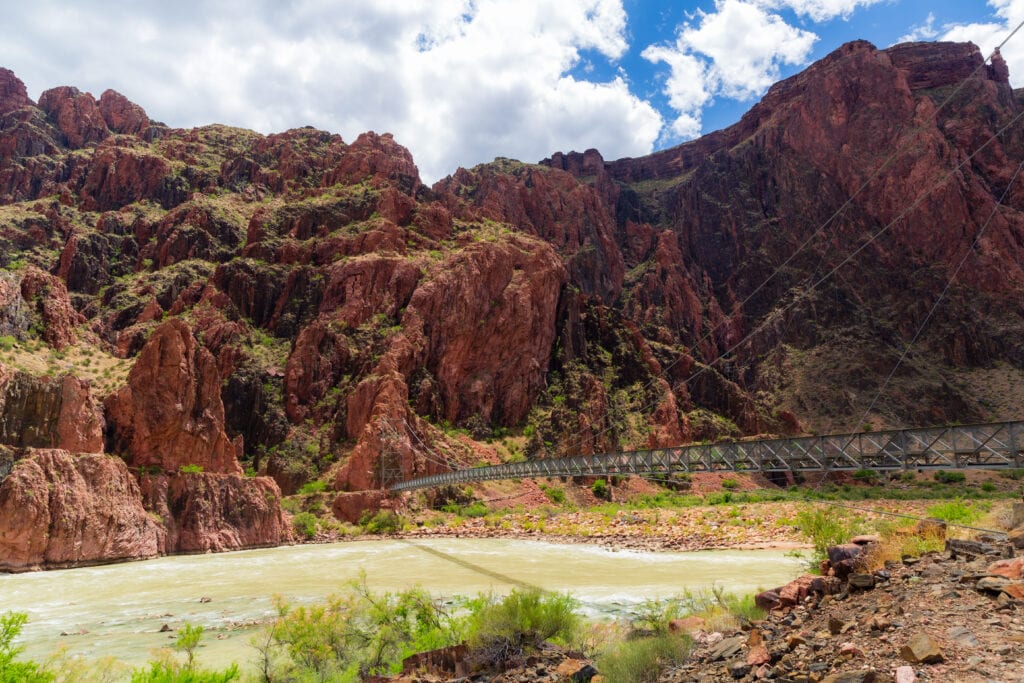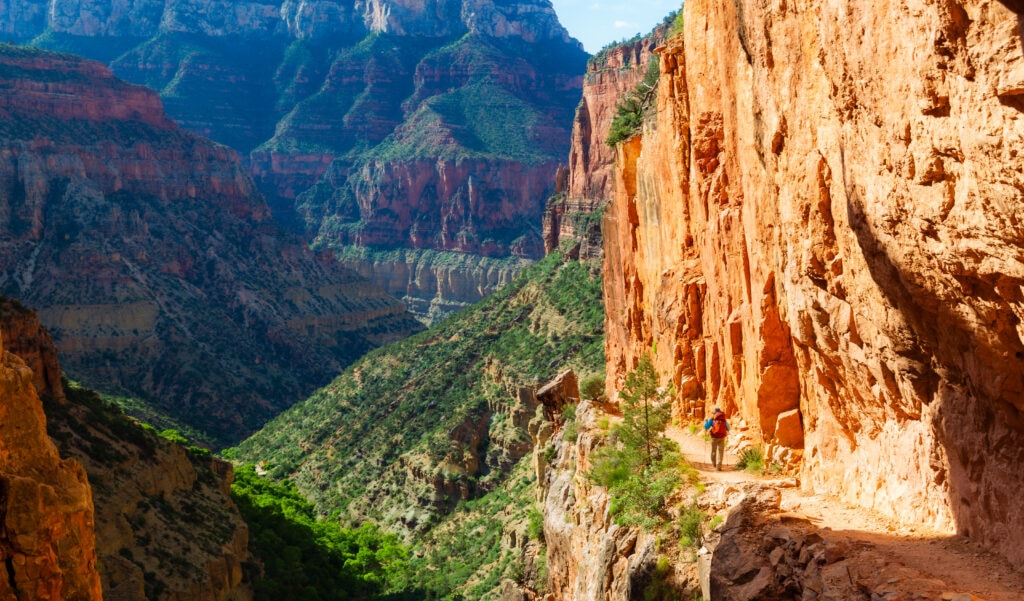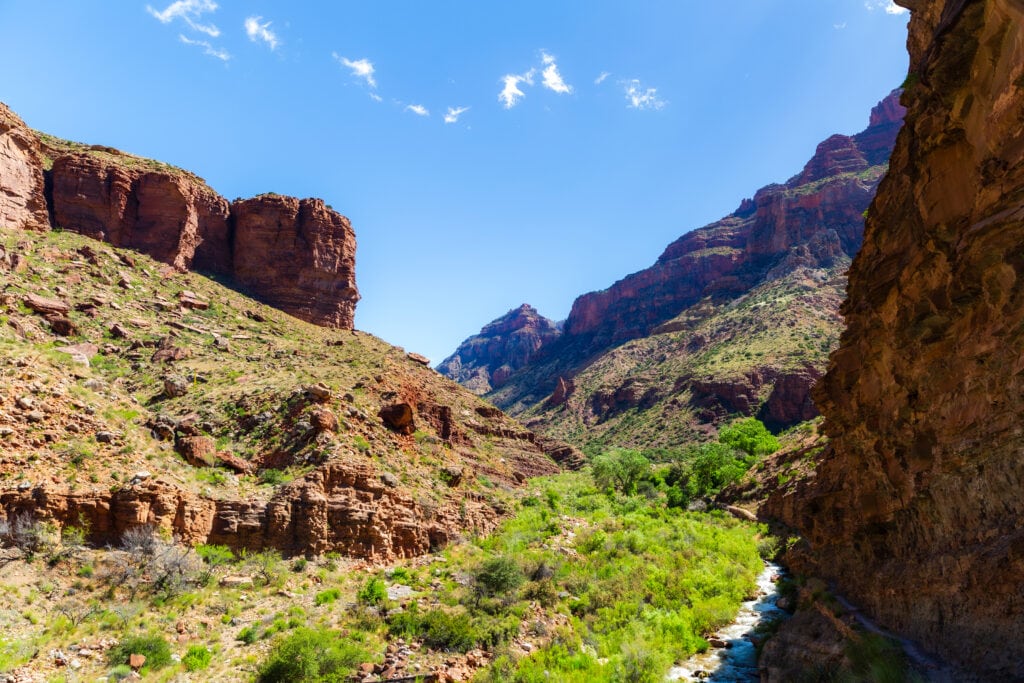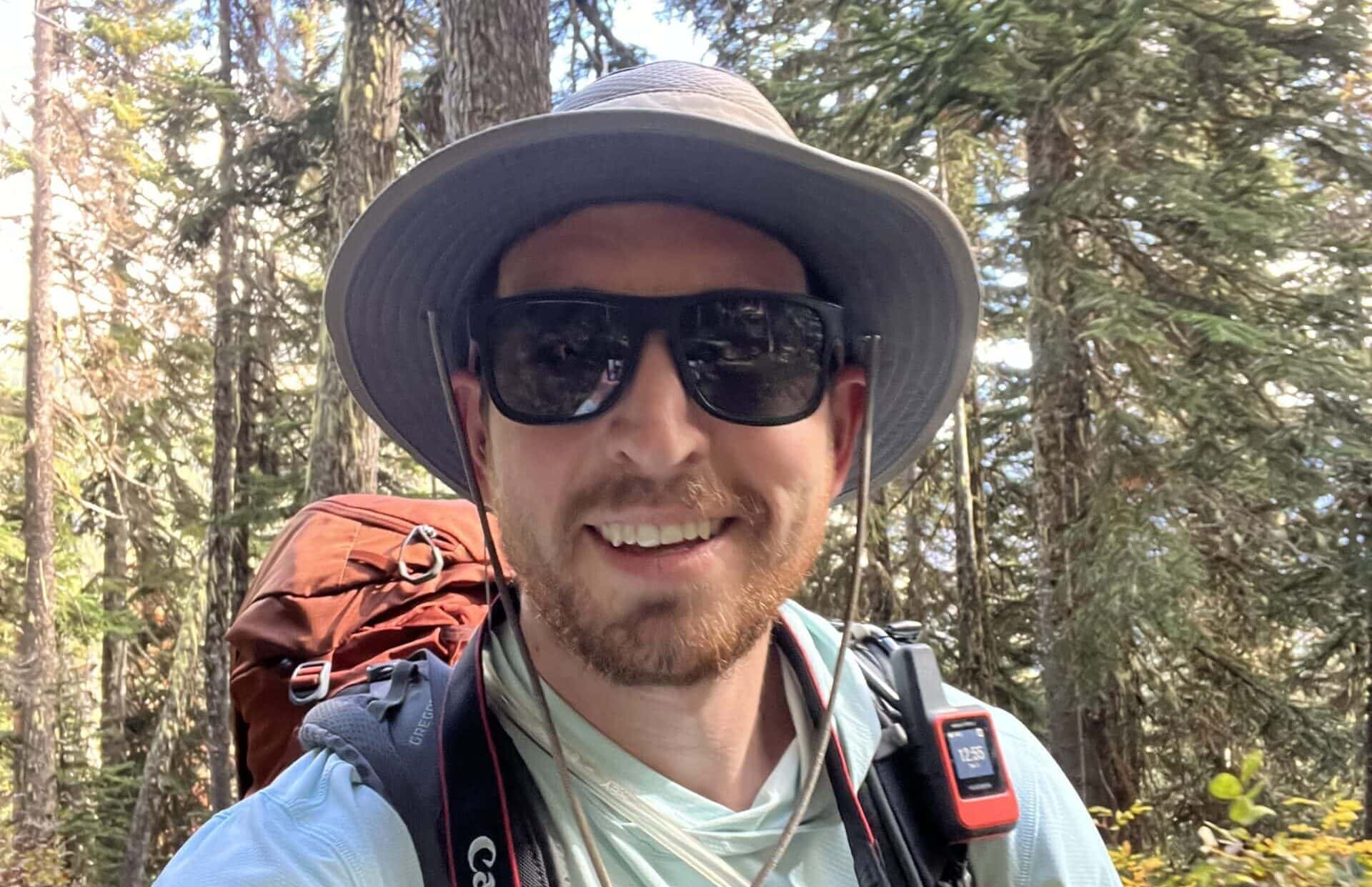11 Interesting Facts About The Grand Canyon
Grand Canyon National Park, one of the world’s most iconic and breathtaking natural wonders, offers an unparalleled landscape rich in geological history and cultural significance. Spanning over 277 miles in length and reaching depths of over a mile, the Canyon presents a dramatic vista of layered red rock that reveals millions of years of geological evolution.
The park attracts millions of visitors each year as a sanctuary for an astonishing variety of flora and fauna and a site of deep spiritual importance to several Native American tribes. The Grand Canyon continues to inspire awe and curiosity as a testament to nature’s power and beauty.
Age and Formation

The Grand Canyon is believed to have formed 5 to 6 million years ago due to the erosive forces of the Colorado River. Over millions of years, the river has cut through layer after layer of rock, creating the steep, expansive walls and intricate formations we see today.
Geological Diversity

The Canyon exposes an incredible sequence of rock layers that provide significant insights into the Earth’s geological history. The oldest rocks at the bottom, the Vishnu Basement Rocks, are about 1.8 billion years old.
Size and Scope

The Grand Canyon stretches over 277 miles (446 kilometers) long, up to 18 miles (29 kilometers) wide, and a mile (1.6 kilometers) deep. It covers an area of over 1,900 square miles, making it a massive geological feature that is visible from space.
Biological Diversity

Despite its arid environment, the Grand Canyon is home to over 1,500 plants, 450 birds, 91 mammals, 47 reptile species, and numerous amphibians and fish. This diversity is mainly due to the variety of ecosystems within the park.
Cultural Significance

Native American tribes have inhabited the area for thousands of years. Today, many, including the Havasupai, Hopi, Hualapai, Navajo, and Paiute tribes, consider the park a sacred site. Due to this, as you recreate, please do so responsibly.
Tourism

The Grand Canyon is one of the world’s premier natural attractions, attracting about five million visitors annually. The park offers numerous viewpoints, hiking trails, and rafting opportunities.
Weather Extremes

Weather in the Grand Canyon varies significantly between the rim and the floor, with the rim being much more relaxed. Summer temperatures on the canyon floor can soar above 120 degrees Fahrenheit (49 degrees Celsius), while winter can bring snow to higher elevations.
National Park Designation

The Grand Canyon was designated as a national park in 1919, making it the 15th national park in the United States. It was recognized for its profound natural beauty and unique geological features.
UNESCO World Heritage Site: In 1979, the Grand Canyon was designated as a UNESCO World Heritage Site because of its exceptional natural beauty and geological importance.
Historic Exploration

The first European known to have viewed the Grand Canyon was García López de Cárdenas from Spain, who arrived in 1540. The Canyon was largely unexplored by Europeans until Major John Wesley Powell led the first expedition down the river in 1869.
Conservation Efforts

Due to its unique ecosystems and historical significance, the Grand Canyon is heavily protected. Ongoing conservation efforts aim to preserve its landscapes, prevent pollution, and maintain the natural habitat for its diverse flora and fauna.
Add Prints To Your Home Or Office



